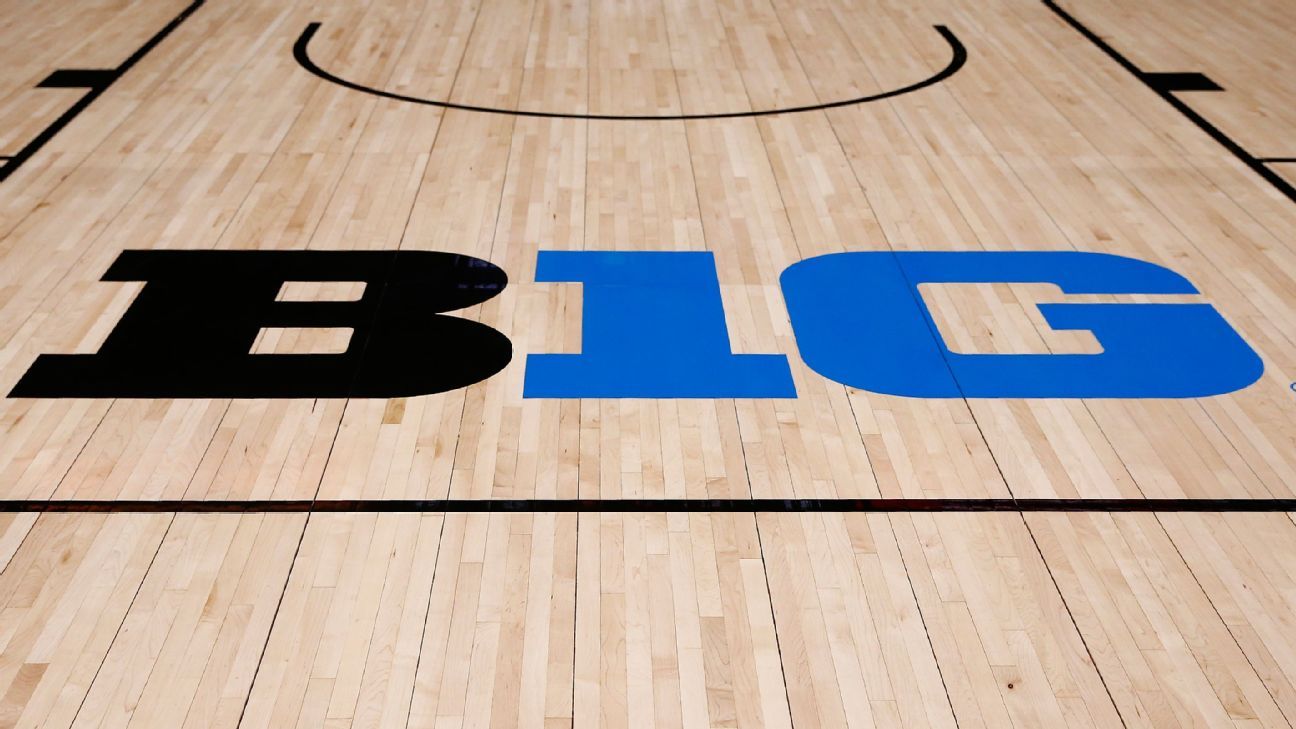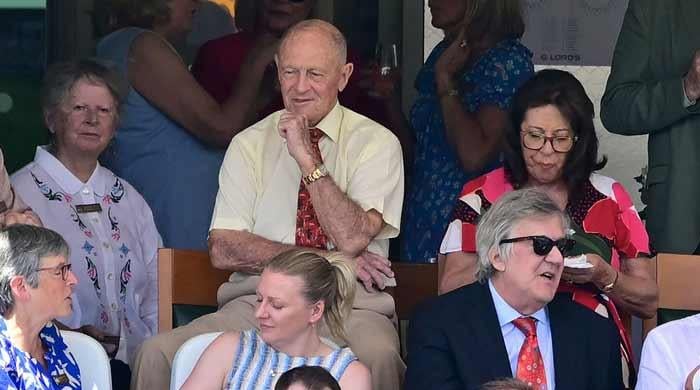Sports
Sources: Big Ten closes in on $2 billion capital deal

The Big Ten is closing in on voting on a capital agreement that will infuse league schools with more than $2 billion, industry sources told ESPN.
There’s been momentum within recent days for the deal to push forward, and the structure of the complicated agreement is coming together. A vote is expected in the near future, per sources.
The framework calls for the formation of a new entity, Big Ten Enterprises, which would hold all leaguewide media rights and sponsorship contracts.
Shares of ownership in Big Ten Enterprises would fall to the league’s 18 schools, the conference office and the capital group — an investment fund that’s tied to the University of California pension system. Yahoo Sports first reported the involvement of the UC investment fund.
The pension fund is not a private equity firm, and the UC fund valuation proved to be higher than other competing bids. This has been attractive to the Big Ten and its schools, according to sources.
A source familiar with the deal said there’s been momentum in recent days, but the league is still working with leadership to make a final decision.
The exact equity amounts per school in Big Ten Enterprises is still being negotiated. There is expected to be a small gap in equity percentage between the biggest brands and others, however it is likely to be less than a percentage point.
ESPN reported last week that a tiered structure is expected in the initial allocation of the $2 billion-plus in capital, with larger brands receiving more money. Each school, however, would receive a payout in at least the nine-figure range, sources said.
The deal would call for an extension of the league’s Grant of Rights through 2046, providing long-term stability and making further expansion and any chance league schools leave for the formation of a so-called “Super League” unlikely.
Traditional conference functions are expected to remain with the conference. Any decision-making within Big Ten Enterprises would be controlled by the conference. The UC pension fund would receive a 10% stake in Big Ten Enterprises and hold typical minority investor rights but no direct control.
The money infusion is acutely needed at a number of Big Ten schools that are struggling with debt service on new construction, rising operational expenses and providing additional scholarships and direct revenue ($20.5 million this year and expected to rise annually) to athletes.
The Big Ten has argued that the deal would alleviate financial strain and help middle- and lower-tier Big Ten schools compete in football against the SEC.
ESPN first reported last week that the league was in detailed conversations about the deal.
Big Ten Enterprises would be tasked with not just handling the league’s valuable media rights (the current seven-year, $7 billion package runs through 2030) but trying to maximize sponsorship and advertising deals leaguewide such as jersey patches or on-field logos.
“Think of it this way — the conference is not selling a piece of the conference,” a league source told ESPN last week. “Traditional conference functions would remain 100 percent with the conference office — scheduling, officiating and championships. The new entity being created would focus on business development, and it would include an outside investor with a small financial stake.”
The deal has not been without detractors, with both Michigan and Ohio State — the league’s two wealthiest athletic programs — expressing skepticism initially, per sources. Each school has been hit with significant lobbying not just from the league office but also other conference members to come to an agreement.
Politicians in a number of states have also voiced opposition, including United States Senator Maria Cantwell (D-WA) who stated Thursday, “You’re going to let someone take and monetize what is really a public resource? …That’s a real problem.”
Cantwell followed up Friday by sending a letter to each Big Ten president warning that any deal involving private equity could invite review, including impacting the schools’ tax-exempt status.
Sports
The Commanders are coming up empty on this season’s ‘luck dashboard’
After benefiting from good fortune in 2024, Washington is among the NFL’s unluckiest teams in 2025, according to metrics compiled by an NFL data scientist.
Source link
Sports
How Nick Saban and ESPN tried to help Lane Kiffin coach two teams at once
Kiffin wanted to stay at Mississippi through the College Football Playoff even after taking the job at LSU. That only made sense on television.
Source link
Sports
Geoffrey Boycott advises England to ‘use brains’ for Ashes remainder

Legendary England batter Geoffrey Boycott on Monday advised the Ben Stokes-led side to adopt a more strategic and thoughtful approach ahead of the second Ashes Test against Australia, scheduled for Thursday in Brisbane.
England suffered an agonising eight-wicket defeat in the series opener in Perth, which lasted less than two days, the first of which was dominated by the touring side as they had reduced the hosts to 123/9 after accumulating 172 all out.
The visitors now face another gruelling challenge in the blockbuster series as they take on the Baggy Greens in a pink-ball Test, in which the hosts boast a dominant record, having lost just one out of their previous 14 appearances, but Boycott, who has won Ashes both in England and Australia, believes that the Three Lions can win the upcoming game by adopting a calculated strategy.
He, however, warned England batters of self-destruction, advising them to “use their brains” and decide whether to attack or hold back after analysing the situation.
“But it doesn’t help our chances of success if Ben Stokes keeps encouraging our batsmen to attack, attack with one finger hovering over the self-destruct button,” Boycott wrote in his Daily Telegraph column.
“Nobody is asking the players to stop being positive because they have given us some marvellous, thrilling and entertaining cricket. All we ask is for them to use their brains and realise there are times when they should throttle back and be aware of situations and bat accordingly,” he added.
Boycott, who represented England in 108 Tests and 36 ODIs, also slammed Stokes for his comments in which he referred to former cricketers as “has-beens” but expressed satisfaction over the all-rounder’s partial apology.
“To call past players ‘has-beens’ was disrespectful, especially as some of those ‘has-beens’ played in teams that won the Ashes in England and Australia,” Boycott wrote.
“I am glad Ben has half apologised, saying it was a slip of the tongue, because none of this team has won the Ashes in Australia. Get the job done, because then you don’t need to say anything and you can bask in all the glory coming your way.”
-

 Sports1 week ago
Sports1 week agoWATCH: Ronaldo scores spectacular bicycle kick
-

 Entertainment1 week ago
Entertainment1 week agoWelcome to Derry’ episode 5 delivers shocking twist
-

 Politics1 week ago
Politics1 week agoWashington and Kyiv Stress Any Peace Deal Must Fully Respect Ukraine’s Sovereignty
-

 Business1 week ago
Business1 week agoKey economic data and trends that will shape Rachel Reeves’ Budget
-

 Politics1 week ago
Politics1 week ago53,000 Sikhs vote in Ottawa Khalistan Referendum amid Carney-Modi trade talks scrutiny
-

 Tech6 days ago
Tech6 days agoWake Up—the Best Black Friday Mattress Sales Are Here
-

 Fashion1 week ago
Fashion1 week agoCanada’s Lululemon unveils team Canada kit for Milano Cortina 2026
-

 Tech1 day ago
Tech1 day agoGet Your Steps In From Your Home Office With This Walking Pad—On Sale This Week





